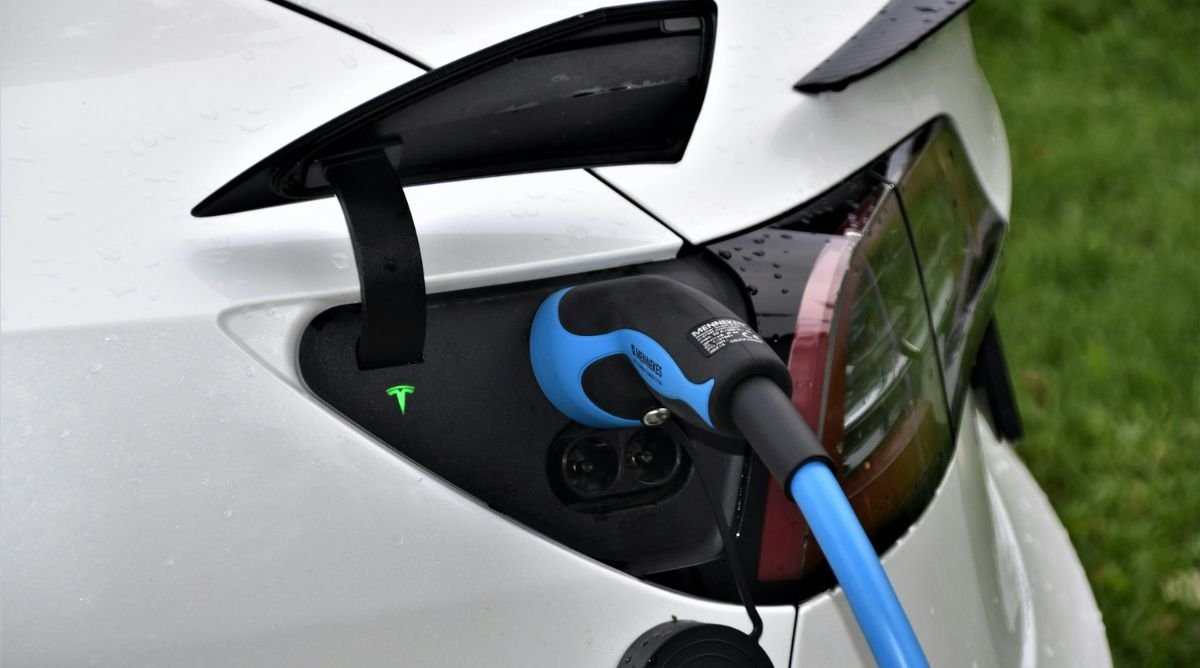Norway is about to do something no country has ever done before. Gas-powered cars will be obsolete by 2025. Already, 88.9% of new vehicle sales in 2024 will be electric vehicles. In a few years, every new car driven on Norwegian roads will be electric—not a hybrid, not gasoline, not diesel, only battery power.
It’s a surprising change, especially for a country that relied on oil for its economy. Norway didn’t accidentally start this change; it created it on purpose. Large tax reductions, tough rules on pollution, and a charging network so vast that range anxiety barely exists—the plan was bold, and it succeeded.
The rest of the world is watching right now. Is it possible for other countries to follow Norway? Or is this a one-off success narrative fit for a small, rich nation?

The Road to Dominance:
Gas-powered vehicles ruled Norway’s highways for decades. Then, all changed.
EVs hardly registered on the radar in 2010—less than 1% of new car sales. Today they have eliminated the rivals. Nearly nine out of ten newly sold cars by 2024 were completely electric.
Real change began in 2018. EVs topped gas and diesel for the first time. Two years later, not just among EVs but also generally, Tesla’s Model 3 became Norway’s most sold car. Top ten best-selling cars in the nation by 2024? Every one of them was electric.
Norway did not only start using electric cars. It eliminated internal combustion more quickly than anyone expected.
Reasons for the Increase: Policies and Rewards
Norway made it easy for people to choose EVs.
1. Tax Breaks That Made Gas Cars Obsolete:
Most countries have EVs as the more expensive choice. In Norway? It is the other way around.
Costs usually adding thousands to a gas-powered car—import taxes, VAT (25%), and CO₂-based taxes—are waived from electric autos. Thus, in many circumstances, an EV is less expensive than its fossil fuel equivalent.
2. The “Polluter Pays” Model:
EVs received discounts; petrol and diesel automobiles received the reverse. Norway slapped heavy taxes on emissions, fuel, and even vehicle weight. Drive electric, or pay up, was the plain message.
3. Perks That Made EVs the Smart Choice:
- Toll roads? Free or discounted.
- Traffic? EVs could use bus lanes.
- Parking? Cheaper, sometimes even free.
- Road-use taxes? EV owners didn’t have to worry about them.
When an EV is cheaper, more practical, and comes with extra benefits, why drive a gas car?
How Norway Created a Seamless Charging Network:
A nation can force EV adoption all it wants, but drivers won’t make the change without appropriate infrastructure. Norway had this knowledge. And it acted fast.
1. Charging Stations Everywhere:
Charging an EV in Norway is as easy as grabbing a cup of coffee.
With more than 22,000 public charging stations, drivers never have to worry about running low. Every thirty miles along main highways are fast chargers positioned. There is access even in the most far-off places.
No range anxiety. No stress. Just plug in and go.
2. Home Charging Incentives
Most EV owners would rather charge right at home. Norway made it even more simple.
The government provided home charger subsidies to help to lower installation costs. Charging stations were pushed into apartment buildings and offices to guarantee access for everyone, not only for those with private driveways.
The result? More people could charge overnight, skipping the hassle of public stations altogether.
3. The Shift to Wireless and Ultra-Fast Charging:
- Already under testing in Oslo is wireless charging for taxis. Parks and charge; no plugs or cords.
- Extremely fast 350kW chargers are emerging, drastically reducing charging times from hours to just minutes.
- The majority of Norway’s system is powered by hydroelectric power; therefore, these EVs are not only cleaner but also run entirely on renewable energy.
The Ripple Effect:
On a national and worldwide basis, Norway’s switch to electric cars has been rather successful.
1. Defining the Standard for Acceptance of EVs:
The world watches when Norway leads.
Other countries are copying Norway’s tire marks now. They are realizing that a complete switch to electric vehicles is not only possible but also financially wise.
Inspired by the success of nations like Norway, the EU is working hard to outlaw sales of new internal combustion engine vehicles by 2035. The Netherlands, France, and other countries are already working hard to stop using fossil fuel cars.
Norway’s bold action proved that change is possible, and today nations all around are picking up the torch.
2. Effects on Worldwide Manufacturers:
Things that happen in Norway do not remain in Norway.
The pressure is on the largest automakers worldwide. Companies who were first reluctant to enter the electric car scene are now racing to catch up.
Plans for Volkswagen, BMW, and Volvo to go totally electric within the next ten years are all in development.
The little but significant market of Norway has evolved as an innovation test ground. Manufacturers understand that becoming popular in Norway can lead to more general worldwide success.
3. Green Jobs and Economic Growth:
Norway’s push for electric vehicles has sparked a new kind of economy.
With EVs come green jobs—from manufacturing to charging infrastructure. New industries are rising up, creating opportunities and boosting local economies.
Norway is not only benefiting from the EV revolution but also leveraging its strengths to maintain its lead. The country’s hydropower and renewable energy resources make its electric grid one of the cleanest in the world.
People all around are paying attention. Furthermore, the leadership of Norway shows that a more sustainable and cleaner planet is within reach.

Challenges and Obstacles on Norway’s EV Journey:
Every victory has its challenges, and Norway’s EV revolution is no different. While the country is at the vanguard of this transformation, it has its own set of challenges.
1. Charging Infrastructure:
Though it’s not flawless, Norway’s charging network is very remarkable.
The need for charging stations rises as more electric vehicles find their way on roadways. Availability in remote locations could be restricted. Though the infrastructure issue still exists, Norway is aggressively trying to close these gaps.
Moreover, the increasing number of EVs implies the electric grid will have to change. More power will be needed; hence smart grids will be very important in controlling demand.
2. Affordability:
Electric cars can be expensive even with hefty subsidies.
For many, the upfront cost of EVs still presents a barrier; while Norway has helped by providing incentives, the difficulty is making sure everyone—from all income levels—can afford the change. The affordability discrepancy can become a major problem if demand rises.
3. Counting on Global Suppliers:
Global supply networks, especially for battery manufacture, determine Norway’s EV revolution.
Asia produces most of the batteries; hence any disturbance in this supply could affect Norway’s change of course. The country still faces difficulties even while it is investing in local battery manufacturing. Furthermore, still ethically problematic is sustainable material purchasing.
Norway is resolved to go ahead despite these obstacles. These hiccups in the road could simply be stepping stones towards a better, more sustainable future with the correct investments and adaptations.
Norway’s EV Future and What It Means for Us All:
Norway leads the path into a totally electric future, and the globe keeps careful observation. The next event could transform everything.
1. A Global Roadmap:
Can other countries learn from Norway’s example?
Replicating Norway’s success will be challenging. Its abundant renewable energy sources, which few countries possess, make it a unique resource. Still, the road map is clear: to make the electric change seamless and successful, it will require a combination of robust regulation, encouraging infrastructure, and consumer incentives.
The difficulty resides in other nations learning from this approach. Success will be about long-term vision and clever planning rather than haste.
2. The Power of Collaboration:
Norway cannot go it by itself.
Globally, the EV revolution needs cooperation if it is to take off. To simplify and speed the change, nations must cooperate sharing resources, infrastructure, and technologies.
A carbon-neutral planet will remain far off without this cooperation. Norway’s path shows it’s feasible—but only if everyone cooperates.
3. The Larger View:
Norway’s drive for electric vehicles goes beyond mere automotive concerns. The movement is worldwide.
This shift fits within a larger campaign to combat emissions and slow down global warming. The real question is not whether other countries would follow but rather how fast they will adjust.
The future is electric. How quickly, though, can the world catch up? Time is running short on the clock.
Closing Remarks:
Norway is leading the way in the electric vehicle revolution. The nation is demonstrating how already a future run on sustainable, clean energy is starting to take shape. But the world keeps close observation as they push onward. Can others keep up?
What Norway does today could shape global transportation for decades. The change toward electric cars goes beyond only automobiles. It fits a bigger trend toward a better earth. And more people will be motivated to act the more Norway achieves.
But time is running out. The contest of adaptation is on. Norway has proved it is feasible. Now, it’s up to the world to follow suit before it’s too late.


